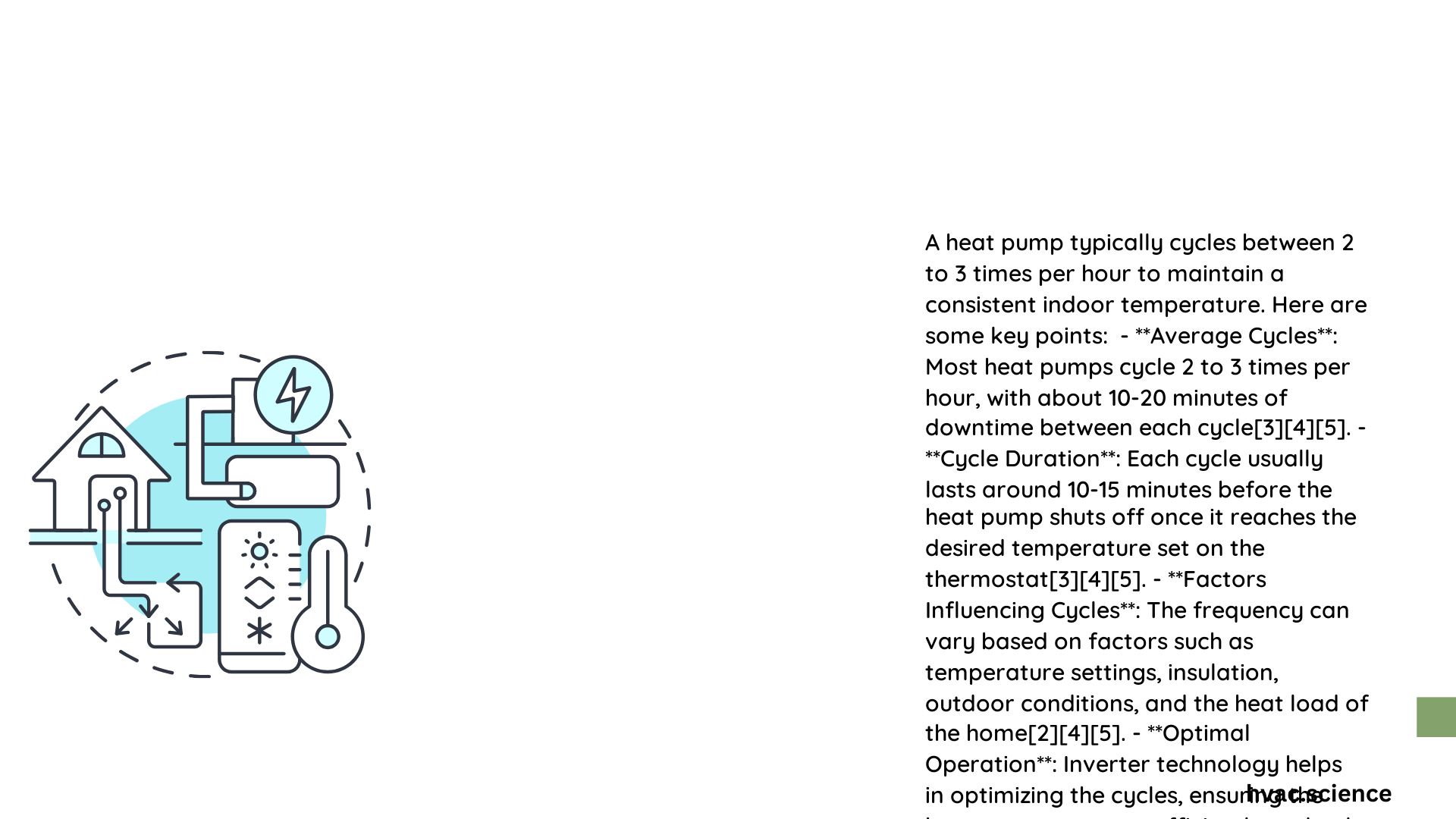Heat pump cycles per hour represent a critical metric in understanding system performance and energy efficiency. Residential heat pumps typically operate between 2-3 cycles per hour, with each cycle lasting 10-20 minutes. These cycles determine how effectively a heat pump maintains indoor temperature while minimizing energy consumption and preventing system wear. Understanding the nuanced factors influencing cycling frequency can help homeowners optimize their heating and cooling systems for maximum comfort and efficiency.
What Determines Heat Pump Cycles Per Hour?
How Do Temperature Differentials Impact Cycling?
Temperature differentials play a crucial role in determining heat pump cycling frequency. When significant gaps exist between the desired indoor temperature and actual room temperature, heat pumps may cycle more frequently to bridge this thermal difference.
Key Factors Influencing Cycling Frequency:
- Indoor and outdoor temperature variations
- Home insulation quality
- System capacity and design
- Thermostat settings
What Are Normal Cycling Rates?
| Cycling Rate | Cycle Duration | Energy Efficiency | Recommended Scenario |
|---|---|---|---|
| 2-3 cycles/hour | 10-20 minutes | High | Standard residential use |
| 1-2 cycles/hour | 20-30 minutes | Moderate | Well-insulated homes |
| 4+ cycles/hour | <10 minutes | Low | Potential system issues |
Why Do Heat Pumps Short Cycle?
Short cycling occurs when heat pumps turn on and off rapidly, which can indicate several potential problems:
- Oversized Equipment
- System capacity exceeds home’s heating/cooling requirements
-
Causes frequent, brief operational periods
-
Thermostat Malfunctions
- Incorrect temperature readings
-
Improper placement near heat sources
-
Refrigerant Level Issues
- Low refrigerant causes inefficient operation
- Triggers premature system shutdowns
How Can Homeowners Optimize Cycling?
Practical Recommendations:
- Ensure proper system sizing
- Maintain regular maintenance
- Install programmable thermostats
- Check and replace air filters regularly
- Monitor refrigerant levels
What Technical Considerations Affect Cycling?
Advanced heat pump systems incorporate variable-speed technologies that dynamically adjust cycling rates based on:
– Real-time temperature demands
– Humidity levels
– External environmental conditions
– Specific zone requirements
Can Cycling Frequency Impact System Longevity?
Excessive cycling can:
– Increase mechanical wear
– Reduce overall system lifespan
– Elevate energy consumption
– Compromise temperature consistency
Professional Insights

Experienced HVAC technicians recommend:
– Aim for 2-3 cycles per hour
– Maintain cycle durations between 10-20 minutes
– Monitor system performance quarterly
– Address unusual cycling patterns immediately
Technical Diagnostic Approach
Professionals utilize specialized diagnostic tools to assess:
– Compressor start/stop frequencies
– Energy consumption patterns
– Temperature differential measurements
– System response times
Conclusion
Understanding heat pump cycles per hour empowers homeowners to optimize their HVAC systems, balancing comfort, efficiency, and equipment longevity.
